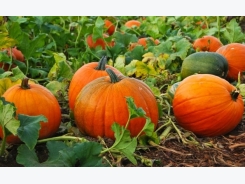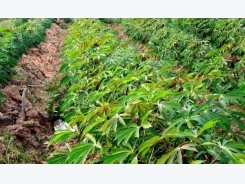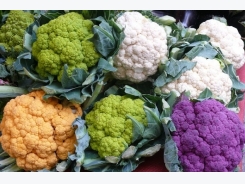Aloe Vera Cultivation Information Guide

Introduction of Aloe Vera Cultivation:- As use of herbals and other medicinal plants are increasing, the demand for these kind of crops growing in local and international markets. One of the miracle plants in medicinal group is Aloe Vera. Aloe Vera is a succulent plant which is mostly grown in hot and dry climates with little annual rainfall. Literally, Aloe Vera can be grown in desert and drought regions and most parts of the world due to its wide adaptability. Due to many uses and health benefits of Aloe Vera, this crop is grown commercially across the world. Aloe Vera plant is indigenous to African and Mediterranean regions. Aloe Vera is also known as Aloe, Indian Aloe and in some parts of Asia it’s called as Knvar pathu and Ghrit Kumari.
This wonder medicinal plant has many commercial cosmetic uses. Many cosmetic products are being made from Aloe Vera such as face creams, shampoo, moisturizing creams and shaving creams apart from using it in health industry. This is being used largely in herbal world for curing some diseases. Aloe Vera plants can also be used for decorative purposes. These plants can be grown indoors, in containers and pots.
When it comes to Aloe Vera plant description, it is a stemless having thick and fleshy green leaves which can grow up to 50 to 90 cm tall. Usually, Aloe Vera flowers are produced in summer season on a spike up to 80 cm tall. One can obtain decent profits in Aloe Vera cultivation with proper crop management practices.

Aloe Vera Plantation.
Health Benefits of Aloe Vera:- The following are the health benefits of Aloe Vera

Health Benefits Of Aloe Vera.
- Aloe Vera aids in relieving from constipation.
- Aloe Vera helps externally to cure acne, burns, scars and bug bites.
- Aloe Vera juice aids in digestion.
- Aloe Vera helps in certain skin treatments such as wrinkles and dry skins.
- Aloe Vera helps in detoxifying the body.
- Aloe Vera may reduce the stress level.
- Aloe Vera helps lowering the blood cholesterol.
- Aloe Vera boosts the immune power.
- Aloe Vera stabilizes blood sugar levels.
- Aloe Vera helps in high blood pressure cases.
- Aloe Vera may prevent from kidney disease or kidney stones.
- Aloe Vera helps in curing gum disease and maintains healthy teeth.
- Aloe Vera is heart healthy.
- Aloe Vera helps in skin disease cases.
- Aloe Vera helps in arthritis pain.
Scientific Name of Aloe Vera:- Aloe Barbadensis Miller.
Family Name of Aloe Vera:- Asphodelaceae.
Common Names of Aloe Vera:- Indian Aloe, Chinese Aloe, True Aloe, Barbados Aloe, Burn Aloe and First Aid Plant.
Local Names of Aloe Vera in India:- Gheekumari (Hindi), Khorpad (Marathi), Kathalai (Tamil), Chotthu kathalai (Malayalam), Kalabanda (Telugu), Ghrita Kumari (Bengali). Varieties of Aloe Vera:- Kokoerbom aloe, Gold Tooth, Orange Aloe, Red Aloe, Dorian Black and Yellow Teeth are some of the commonly grown varieties (cultivars) of Aloe Vera in the world.
Climate Requirement for Aloe Vera Cultivation:- Dry and hot climatic conditions are best suited for its cultivation. This crop can even grow in areas where the annual rainfall is below average of the region.
Soil Requirement for Aloe Vera Cultivation: – Aloe Vera can be grown in most of the medium fertile soils ranging from marginal to sub-marginal.However, black cotton soils (heavy soils) are best for high yield of Aloe Vera. Commercial farming of Aloe Vera is suitable in well-drained loamy or sandy loam soils with pH value up to 8.0. However, Aloe Vera crop can tolerate high pH soils as well. One should go for soil test, if the crop is grown on large scale and any nutrient deficiencies gaps should be filled based on soil test results.
Land Preparation for Aloe Vera Cultivation: – As Aloe Vera is a shallow rooted crop; it is not required deep plough during land preparation. One or two ploughing should be given followed by harrowing based on soil type and climate. Make sure to level the land after ploughing. Make beds or suitable plot sizes considering good slop for water drainage and irrigation. Any organic matter like well rotten farm yard manure (FMY) of 10 to 15 tonnes per hectare can be supplemented for better crop growth and yield. This FMY also results in better moisture holding capacity and improves soil texture.

Growing Aloe Vera in Pot.
Propagation and Planting Material in Aloe Vera Cultivation:- Propagation of Aloe Vera crop is done through suckers. Consider to select the planting material of four months old suckers having about four leaves and having 20 cm length for commercial cultivation of Aloe Vera.
Planting and Spacing Aloe Vera Cultivation: – Planting can be done through the year if there is irrigation facility. However, planting right during rainy season (from July to August in India) would be best bet. Plant density of 10,000 to 10,500 suckers is required to cover 1 acre land or 25,000 suckers per 1 hectare land. Dig the pits of 14 to 15 cm deep and plant the suckers at 60 cm x 60 cm apart. Soil around root zone should be pressed firmly so that there won’t be any water stagnation.
Irrigation in Aloe Vera Cultivation:- Aloe Vera grows well with little rainfall. It does not need any irrigation in rainy season. Irrigate immediately after suckers are planted. However, during highly drought and summer conditions one can supply irrigation once in 2 weeks.
Manures and Fertilizers in Aloe Vera Cultivation:- Aloe Vera crop responds very well to organic fertilizer as well as chemical fertilizers. 10 to 15 tonnes of well decomposed manure should be added as part of land preparation. The N: P: K of 50 kg: 25 kg: 25 kg per 1 hectare filed should be applied for proper growth and yield of the crop. Especially these fertilizers help cultivation in lighter soils.
Intercultural Operations in Aloe Vera Cultivation:- It is one of the best crop management practices to keep the filed weed free. This also helps in saving manures, fertilizers and irrigation. 2 to 3 hand weedings should be carried followed by light hoeing in a year. Carry out the first weeding and hoeing should be carried within a 4 weeks after planting the suckers. Subsequent years require 1 or 2 weedings with light hoeing to keep the weed growth in control. Destroy any diseased plants. Dried stakes should be removed regularly.
Pests and Diseases in Aloe Vera Cultivation:- The good thing about Aloe Vera crop is there are no major pests and diseases reported. However, Black brown leaf spots, Mealy bug, and anthecnose are possible in some regions. In case of termite problem, light irrigation can be applied. Black brown spots can be controlled by any sulphur containing insecticides.
Note: Your local horticulture department or any research oriented agriculture university is good source for finding suitable solutions for controlling pests and diseases in Aloe Vera Cultivation.
Harvest in Aloe Vera Cultivation:- Usually, the commercial harvesting of Aloe Vera can be taken from second year of planting. Harvesting can be done with sharp sickle. Make sure to viscous gel from the cut end dries up before packing and marketing also make sure only fully developed mature leaves are harvested for juice extraction.
Yield in Aloe Vera Cultivation:- Well, yield of any crop depends in cultivar, soil type and fertility, plant age and other crop management practices. One can obtain an average of 15 to 20 tonnes of fresh Aloe leaves from second year of planting.
Bottom Line in Aloe Vera Cultivation:- Though, Aloe Vera products have high demand in market, one should pre-arrange the marketing facility before starting the commercial cultivation.
Related news
Tools

Phối trộn thức ăn chăn nuôi

Pha dung dịch thủy canh

Định mức cho tôm ăn

Phối trộn phân bón NPK

Xác định tỷ lệ tôm sống

Chuyển đổi đơn vị phân bón

Xác định công suất sục khí

Chuyển đổi đơn vị tôm

Tính diện tích nhà kính

Tính thể tích ao




 Mango Farming Information Guide
Mango Farming Information Guide  Cauliflower Cultivation Information Guide
Cauliflower Cultivation Information Guide